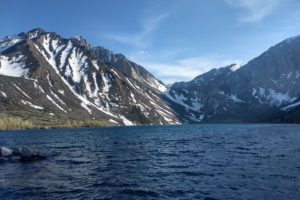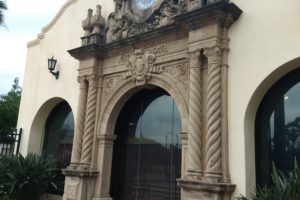On our first day, we went to a Maritime Museum at the northern tip of the peninsula. We saw a sign with the explanation of why the Edmund Fitzgerald sank if you’re interested. I was. I’ve typed out the 2 possibilities in this from the investigations.

Another investigation by the Lake Carriers Association suggested that the Fitzgerald struck bottom in rough seas. This event, known as shoaling, would have caused rivets to pop, allowing water to slowly fill the hold.
Both investigations concluded that the Fitzgerald took on water for some time before sinking. With the loss of effective freeboard, one 30-foot wave rolling toward into the fore-cabin would have forced the bow under. The bow pitching downward allowed water and the 26,000-ton cargo to shift forward, driving the vessel down 530 feet to the bottom of Lake Superior. Probably within seconds, the bow hit with such force that the amidships disintegrated, causing the now empty stern section to roll and override the bow coming to rest upside-down, 170 feet away.
The vessel sank so fast that the crew had no warning; they weren’t able to launch lifeboats, put on lifejackets, or make a distress call. Two oil slicks were reported just far enough apart to have come from the separated bow and stern. By the time searchers reached the scene, the slicks had disappeared, and the legend began.
Have you listened to the song recently? We did while we were traveling along Lake Superior.
fishing tugs
For us, the highlight of the museum was learning about fishing tugs that the commercial fishermen used from the 1930s to 1950s for local fishing, especially in Sturgeon Bay. We’ve never seen these types of boats before, and the men using them were so hardy.







The fishermen let out their fine nets at the back of the tug, the nets would sit all night, and then the fishermen would pull them back up with the fish caught in them the next day.


life raft
As we left the museum, we saw a lifeboat that looked so different. A couple of days later we got to see it on a ship that I’ll point out.


We tried going to a couple of other places that day, but they were closed on Mondays. We did see a colorful old building at a dock on the bay. Since the 1800s, people have painted their names on it. We found the name of one of our granddaughter’s, Mackenzie.






